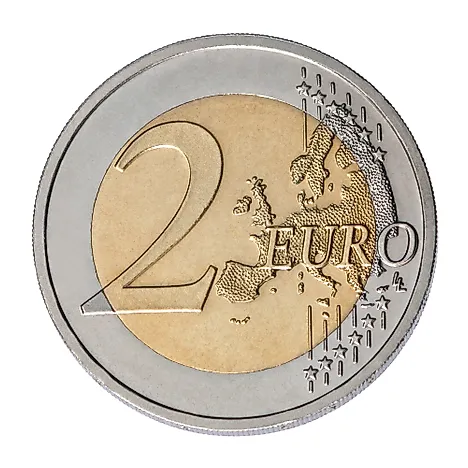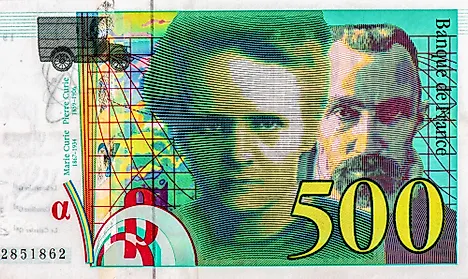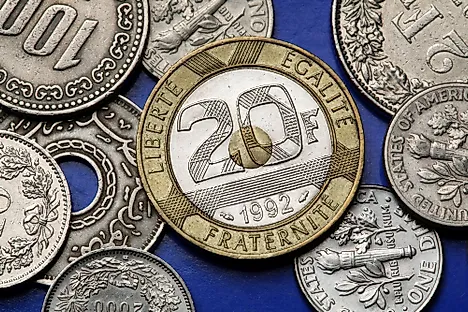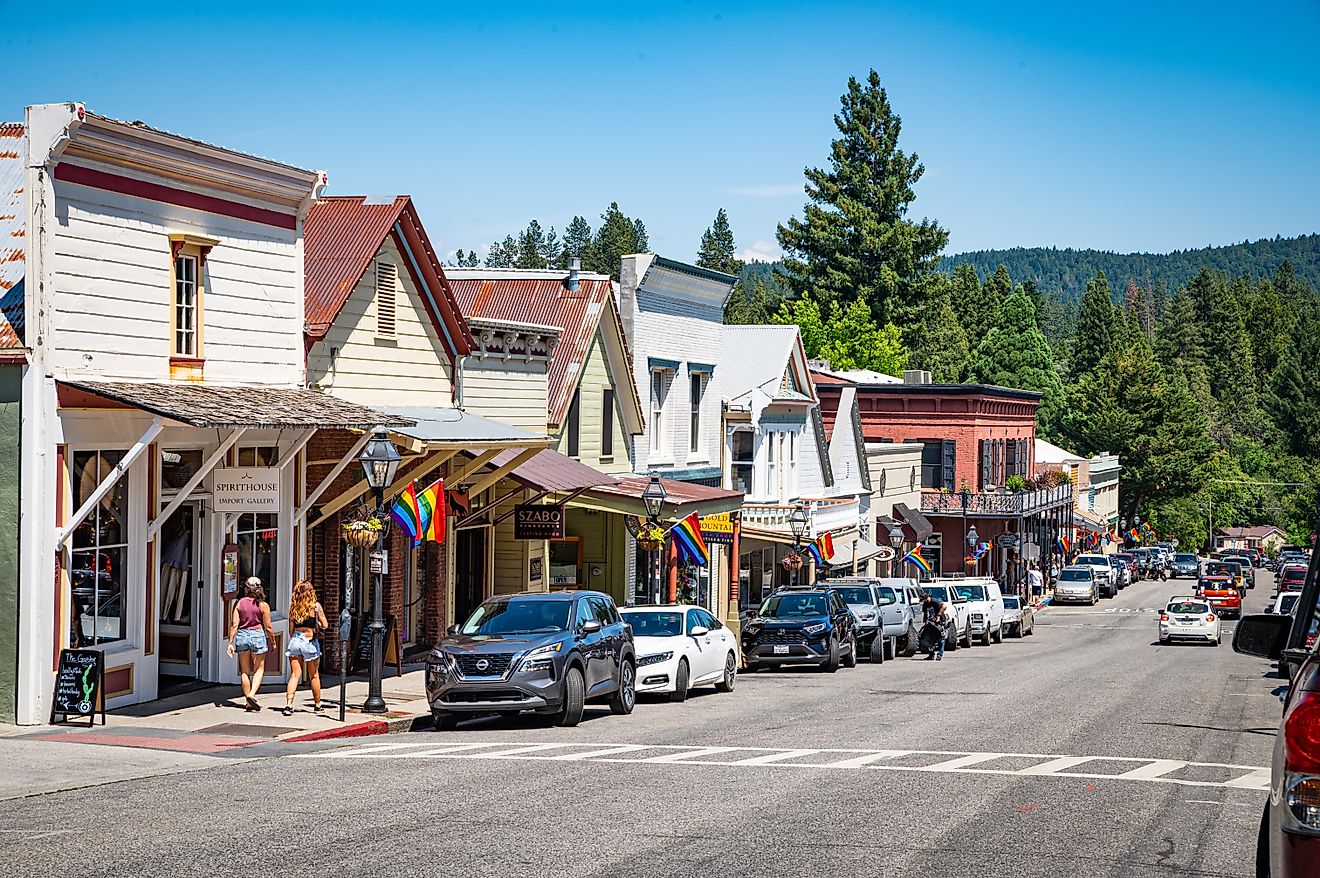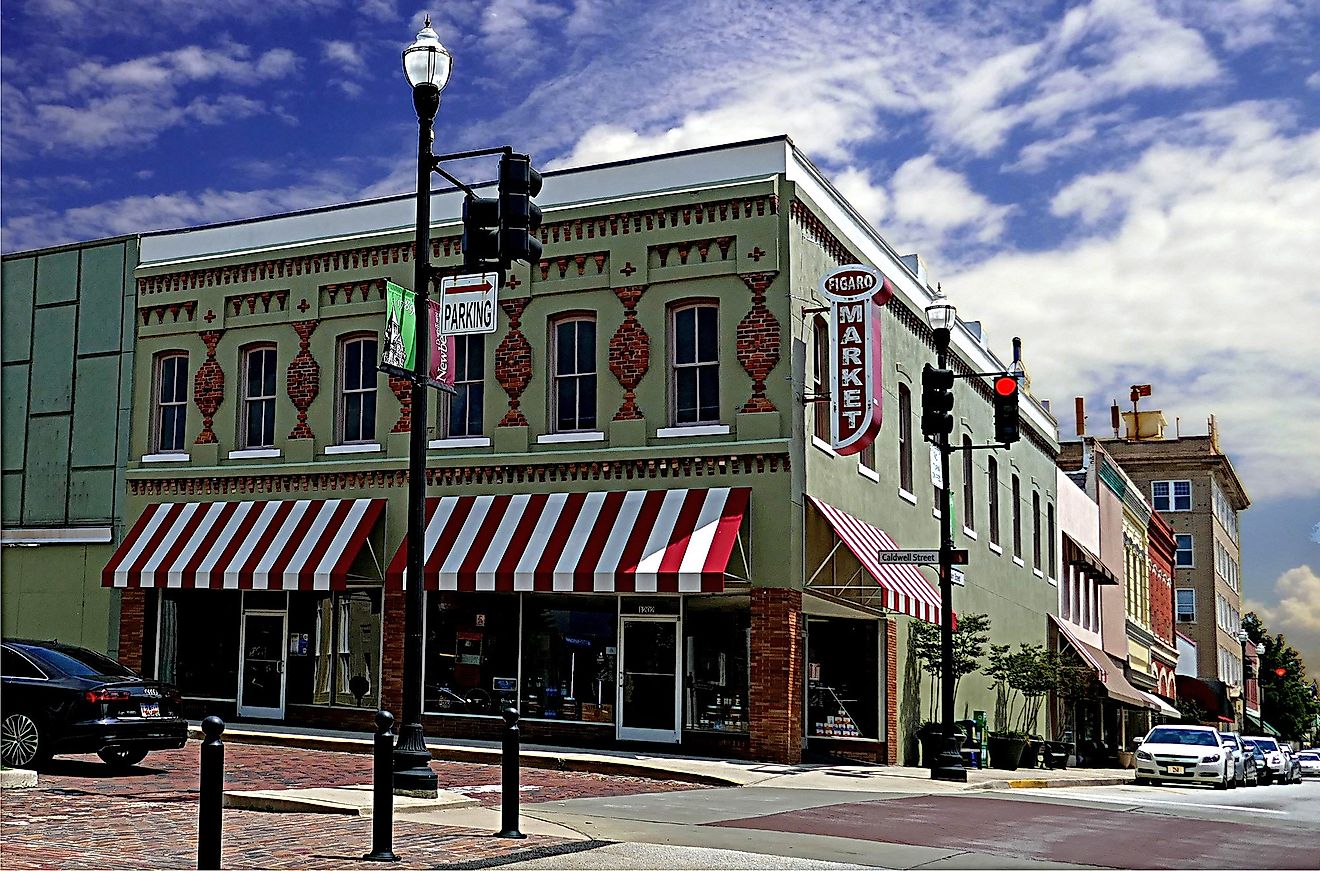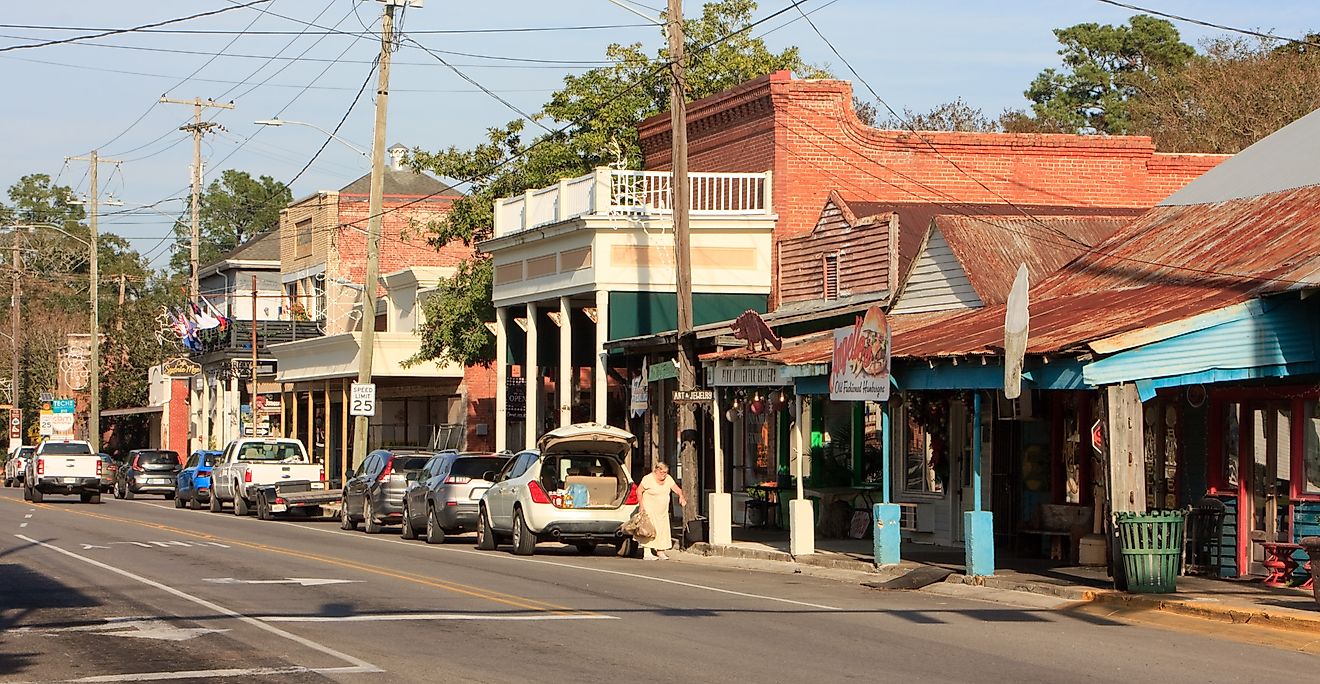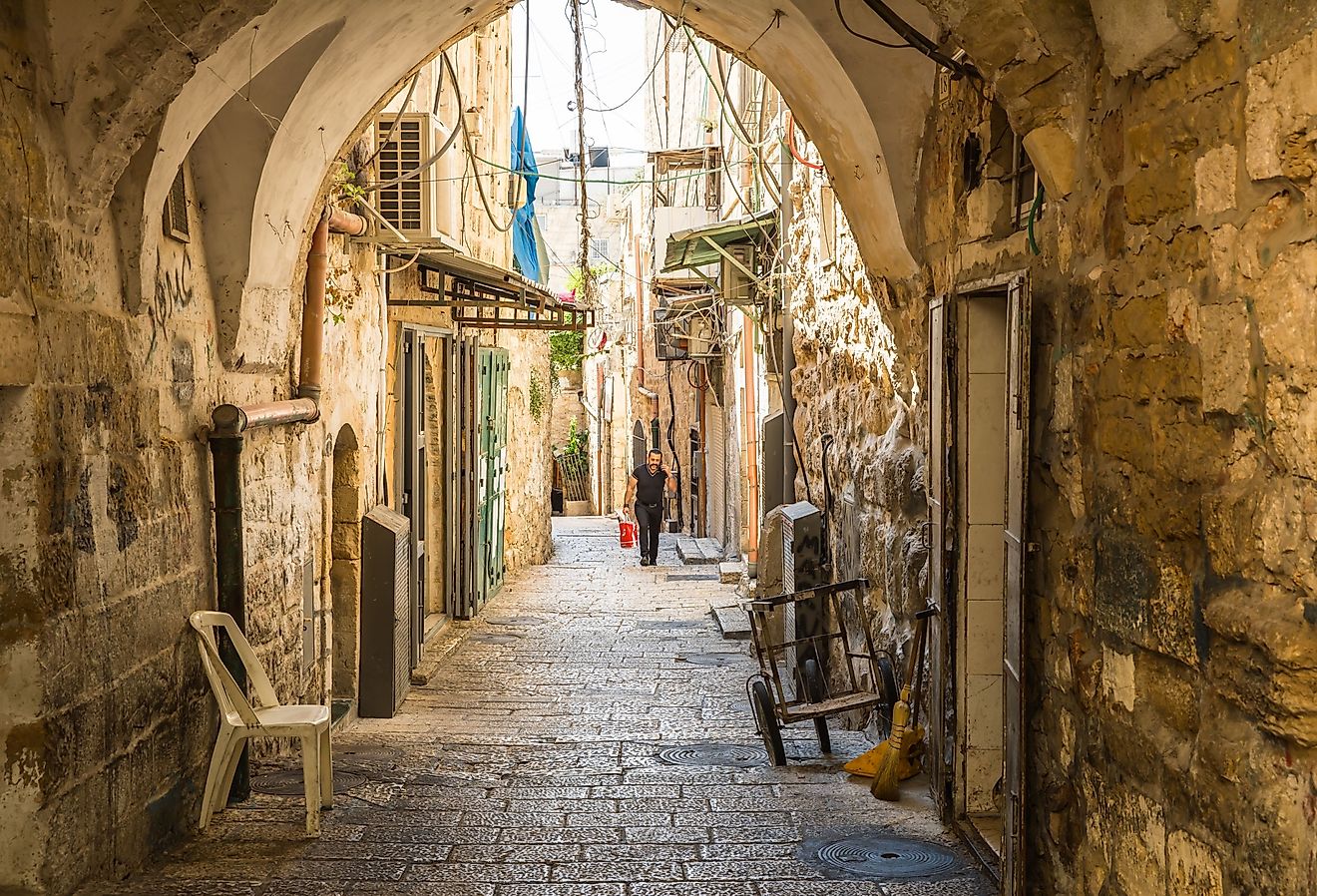Flags, Symbols, & Currencies of France
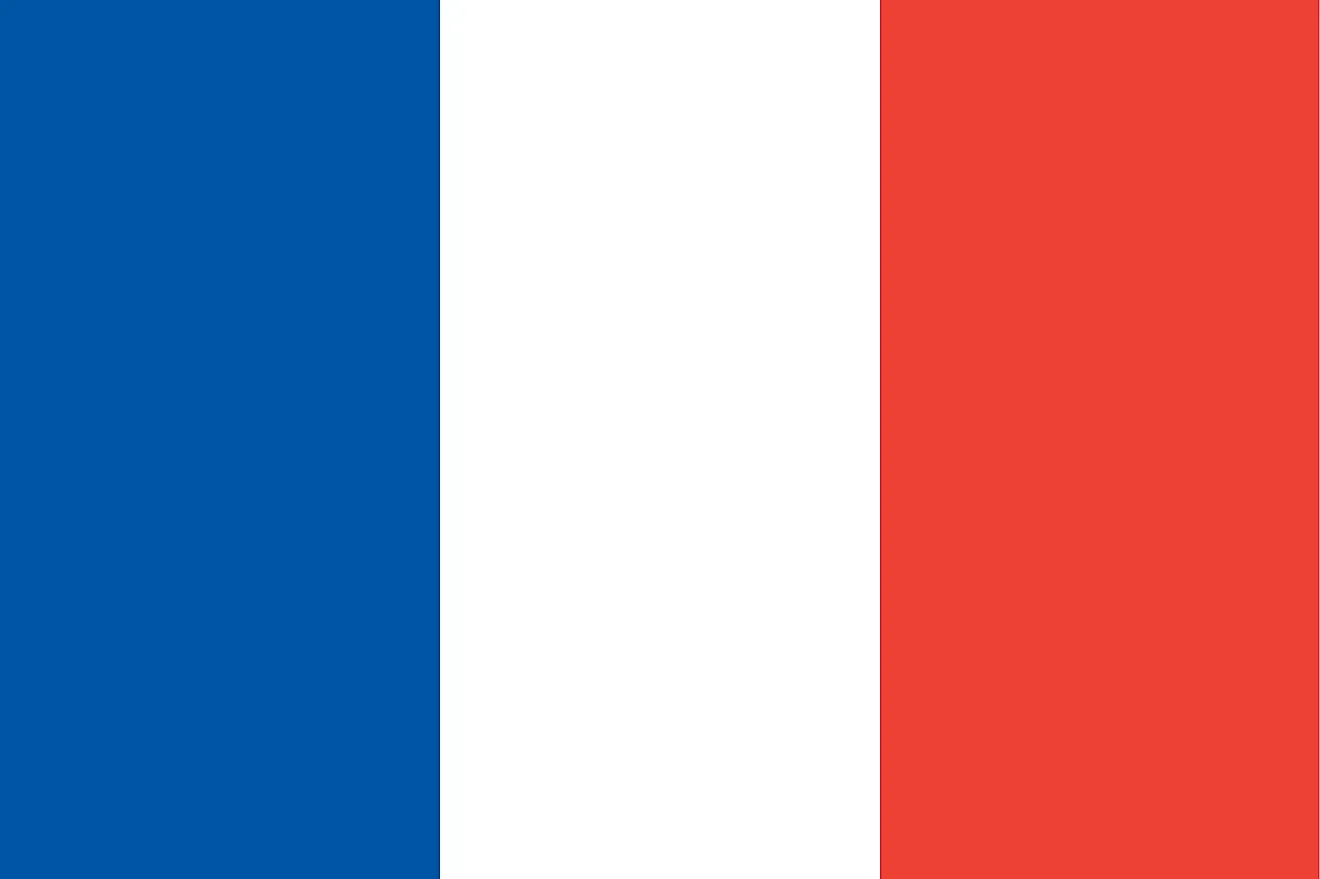
The French constitution under Article two recognizes the national flag of France as one of the country's national symbols. According to the Constitution, the French flag is a tricolor flag of red, white, and blue, from the fly to the hoist side. However, there are two versions of the flag in use in the country. One is a dark version, while the other is a light version. The dark version of the French flag was adopted on February 15, 1794, while the lighter version was adopted in 1976, mainly for use by the government in televised speeches. However, public buildings, town halls, and barracks adorn the darker version.
The tricolor flag of France features three vertical bands of blue, white, and red from hoist to fly side respectively. The red and blue colors are Paris’ traditional colors, with blue associated with St. Martin and red with St. Denis. The two colors are also associated with the Virgin Mary, France’s patroness. Occasionally, the colors are used to represent the revolutionary motto: Liberty, Equality, and brotherhood. However, according to the government website, blue and red are the colors of Paris while white was the color of the king. The flag of France is 1.5 times wider than the height.
Historical Flags of France
The cockade of France, used in the French Revolution influenced the adoption of the tricolor flag. On July 12, 1789, Camille Desmoulins, one of the Revolution’s leaders, asked his people to wear the cockade. Soon, the cockade became the National Guard’s uniform and formed the basis for the design of the tricolor flag adopted in 1790. However, the 1790 flag colors were reversed, with red on the hoist side and blue on the fly side. Jacques-Louis David modified the flag’s design and adopted it in 1794.
Symbols of France
National Coat of Arms of France

The current emblem of France has been a symbol of France since 1953, although it does not have any legal status as an official coat of arms. It is printed on the cover of French passports and was adopted originally by the French Foreign Ministry as a symbol for use by diplomatic and consular missions during 1912. It is considered an emblem rather than a coat of arms since it does not respect heraldic rules. The emblem consists of a wide shield with a lion-head on one end and an eagle-head on the other an eagle-head, bearing a monogram "RF" standing for Republique Francaise (French Republic). A laurel branch symbolizes the victory of the Republic, the oak branch symbolizes perennity or wisdom, and the fasces is a symbol associated with justice (the bundle of rods and an axe, carried by Roman lictors).
National Anthem
- Anthem Title: La Marseillaise (The Marseillaise)
- Music composer and Lyricist: Claude Joseph Rouget de Lisle
- Date of Adoption: July 14, 1795
Claude Joseph Rouget de Lisle composed La Marseillaise in 1792 while in Strasbourg immediately after France declared war with Austria. He titled the song “Chant de guerre pour l'Armée du Rhin" (War Song for the Army of the Rhine). Three years later, the song was adopted as the Republic’s national anthem by the French National Convention.
La Marseillaise (French)
Allons enfants de la Patrie,
Le jour de gloire est arrivé !
Contre nous de la tyrannie
L'étendard sanglant est levé, (bis)
Entendez-vous dans les campagnes
Mugir ces féroces soldats ?
Ils viennent jusque dans vos bras
Égorger vos fils, vos compagnes !
Aux armes, citoyens,
Formez vos bataillons,
Marchons, marchons !
Qu'un sang impur
Abreuve nos sillons !
Que veut cette horde d'esclaves,
De traîtres, de rois conjurés ?
Pour qui ces ignobles entraves,
Ces fers dès longtemps préparés ? (bis)
Français, pour nous, ah! quel outrage
Quels transports il doit exciter !
C'est nous qu'on ose méditer
De rendre à l'antique esclavage !
Aux armes, citoyens...
Quoi ! des cohortes étrangères
Feraient la loi dans nos foyers !
Quoi ! Ces phalanges mercenaires
Terrasseraient nos fiers guerriers ! (bis)
Grand Dieu! Par des mains enchaînées
Nos fronts sous le joug se ploieraient
De vils despotes deviendraient
Les maîtres de nos destinées !
Aux armes, citoyens...
Tremblez, tyrans et vous perfides
L'opprobre de tous les partis,
Tremblez ! vos projets parricides
Vont enfin recevoir leurs prix ! (bis)
Tout est soldat pour vous combattre,
S'ils tombent, nos jeunes héros,
La terre en produit de nouveaux,
Contre vous tout prêts à se battre !
Aux armes, citoyens...
Français, en guerriers magnanimes,
Portez ou retenez vos coups !
Épargnez ces tristes victimes,
À regret s'armant contre nous. (bis)
Mais ces despotes sanguinaires,
Mais ces complices de Bouillé,
Tous ces tigres qui, sans pitié,
Déchirent le sein de leur mère !
Aux armes, citoyens...
Amour sacré de la Patrie,
Conduis, soutiens nos bras vengeurs
Liberté, Liberté chérie,
Combats avec tes défenseurs ! (bis)
Sous nos drapeaux que la victoire
Accoure à tes mâles accents,
Que tes ennemis expirants
Voient ton triomphe et notre gloire !
Aux armes, citoyens...
The Marseillaise
Arise, children of the Fatherland,
The day of glory has arrived!
Against us, tyranny's
Bloody standard is raised, (repeat)
Do you hear, in the countryside,
The roar of those ferocious soldiers?
They're coming right into your arms
To cut the throats of your sons, your women!
To arms, citizens,
Form your battalions,
Let's march, let's march!
Let an impure blood
Water our furrows!
What does this horde of slaves,
Of traitors and conspiring kings want?
For whom have these vile chains,
These irons, been long prepared? (repeat)
Frenchmen, for us, ah! What outrage
What furious action it must arouse!
It is to us they dare plan
A return to the old slavery!
To arms, citizens...
What! Foreign cohorts
Would make the law in our homes!
What! These mercenary phalanxes
Would strike down our proud warriors! (repeat)
Great God! By chained hands
Our brows would yield under the yoke!
Vile despots would themselves become
The masters of our destinies!
To arms, citizens...
Tremble, tyrants and you traitors
The shame of all parties,
Tremble! Your parricidal schemes
Will finally receive their prize! (repeat)
Everyone is a soldier to combat you,
If they fall, our young heroes,
Will be produced anew from the ground,
Ready to fight against you!
To arms, citizens...
Frenchmen, as magnanimous warriors,
Bear or hold back your blows!
Spare those sorry victims,
For regretfully arming against us. (repeat)
But these bloodthirsty despots,
These accomplices of Bouillé,
All these tigers who mercilessly
Tear apart their mother's breast!
To arms, citizens...
Sacred love of the Fatherland,
Lead, support our avenging arms
Liberty, cherished Liberty,
Fight with thy defenders! (repeat)
Under our flags may victory
Hurry to thy manly accents,
So that thy expiring enemies
See thy triumph and our glory!
To arms, citizens...
The Currency of France is the Euro
France is home to one of the biggest economies in the world. Globally, it is ranked the sixth largest economy in consideration to nominal data produced by IMF in 2017. Ranking France according to purchasing power parity, the country is placed at position of tenth globally. It is positioned third among the European countries, with Germany having the biggest economy. France is a member of the European Union. As such, the Euro is the country’s official currency like other EU members. France was one of the first countries to the euro in 2002 and used it alongside the French franc, which was its old currency. The official symbol for the euro is €.
Coins
The euro is divided into euro cents, with 100 cents as the smallest denomination. Euro coins are available in several denominations, including 1c, 2c, 5c, 10c, 20, 50c, €1, and €2. All the coins have similar features, with the only difference being the denomination.
Banknotes
Euro banknotes have similar designs on both sides and are issued in the denomination of €5, €10, €20, €50, €100, € 200, and €500. However, each note has its color, with each dedicated to an artistic period in the history of European architecture. Other features include gateways or windows on observe and bridges on the reverse side.
History of Currencies of France
The original currency used in France was the French franc. It was introduced in 1360 and used until 1641. It was again introduced in 1795 and revalued in 1960 after a long period of inflation with each new franc (NF) worth 100 old francs. Franc was used until the country adopted the use of the euro. The first franc coins were made of gold and used to pay ransom for the king.

